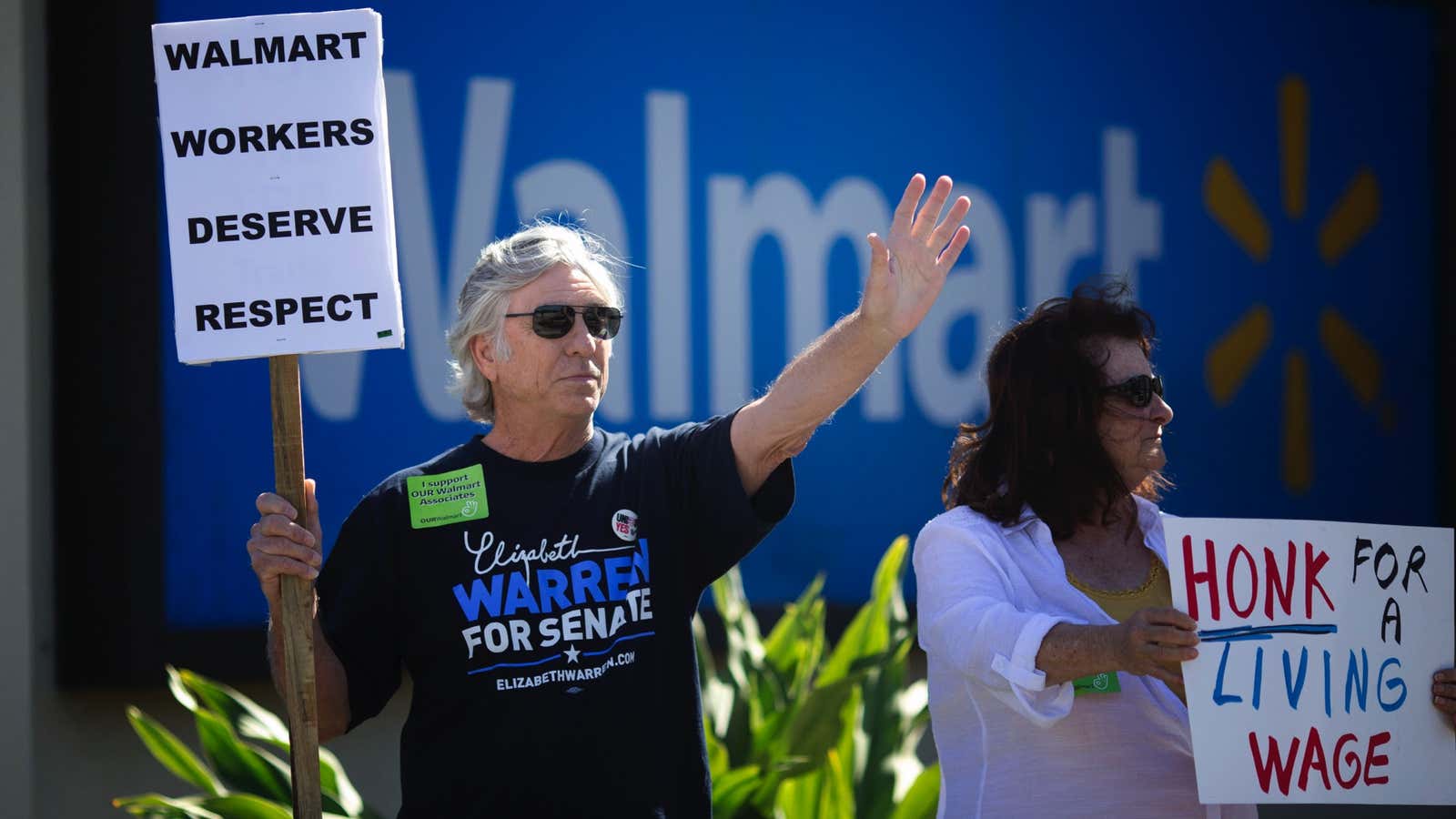Just months after giving raises to half a million US workers, Walmart says its profits have taken a major hit.
The company, which raised its minimum starting wage to $9.00 an hour in April and plans to raise it to $10 in 2016, said it has seen sales and customer experience improve. But paying workers more, increasing worker hours, and adding back positions like greeters and department heads contributed to an 8.2% decline in operating income from the year before.
On Tuesday (Aug. 18) the world’s largest retailer by revenue lowered its profit outlook for the year and said it would look to cut costs in its supply chain and other parts of its business. ”We’re not done yet, this is a big investment,” CFO Charles Holley told reporters on a conference call.
Walmart isn’t alone.
Despite a failure to raise the federal minimum wage from $7.25, 29 states (and dozens of cities) have gone set their own minimum wages above the federal level as the US economy improves, the unemployment rate falls, and competition for workers heats up. Pay battles continue to sweep the country and “the magnitude of [labor pressures] has definitely gotten larger,” Noodles & Co. CFO Dave Boennighausen told analysts this month.
Major retailers and restaurant chains like Walmart, Gap, McDonald’s, Starbucks, and Ikea, as well as trucking companies, staffing services, and nursing homes, have followed suit by raising pay or putting in place their own minimum starting wages.
The move has been good for many workers, which have endured sluggish wage growth as American companies benefited from low-paid workers.
But the consequences of rising wages are quickly rippling across Corporate America: Those same diverse groups of companies are reporting plans to raise prices, slash workers, and move toward increased automation.
“Somewhere along the line, we’ve got to reflect those increased costs and increase the revenue from menu pricing,” said Ark Restauraunts CEO Michael Weinstein on an earnings conference call this month. “If you’re a purveyor selling us chicken, and if your minimum wages go up, you’re going to raise your prices to us, and we’re going to raise our prices to the customers.”
Ark, which operates restaurants like the Bryant Park Grill in New York and the Rustic Inn in Florida, said in some cases, it’s raised prices by 10% to 12%.
For Sally Beauty Supply, higher wages has meant raising prices on things like hair coloring and nail polish. At El Pollo Loco, it’s meant raising prices on value menus and introducing higher-priced items like carne asada. And at Wendy’s, higher wages mean a focus on installing more self-order kiosks and automating more restaurant kitchens.
As for Wendy’s franchisees, they are already looking at reducing overall staff and hours, in addition to raising prices, CEO Emil Brolick told analysts earlier this month.
“Unfortunately, we believe that some of these increases will clearly end up hurting the people that they’re intended to help,” Brolick said.
